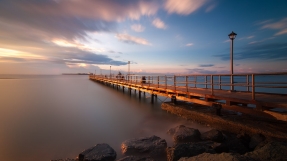Blisters in Children
What is a blister?
A blister is a bump on the skin containing fluid. Blisters are usually circular in shape. The fluid that forms underneath the skin can be bloody or clear.
What causes a blister?
Blisters are caused by injury, allergic reactions, or infections, which may include the following:
-
Burns and scalds
-
Sunburns
-
Friction (such as from a shoe)
-
Contact dermatitis
-
Impetigo (a contagious infection of the skin)
-
Viral infections (including chickenpox and herpes zoster)
-
Fungus
-
Thumb-sucking
-
Drugs reactions
The symptoms of a blister may resemble other skin conditions or medical problems. Always talk with your child's health care provider for a diagnosis.
First-aid for blisters
Blisters often heal spontaneously. Treatment will vary according to the cause. Some general guidelines for treatment may include:
-
Wash the area with soap and water.
-
A cold or ice pack may help reduce swelling and discomfort.
-
Keep the area clean and dry. Do not burst or puncture the blister.
-
If the blister bursts, place an adhesive bandage or dressing on the area to keep it clean.
-
Observe the area for signs of infection, like increased warmth, swelling, redness, drainage, pus formation, or pain. If you notice any signs of infection, call your child's health care provider. Antibiotics may be needed.






